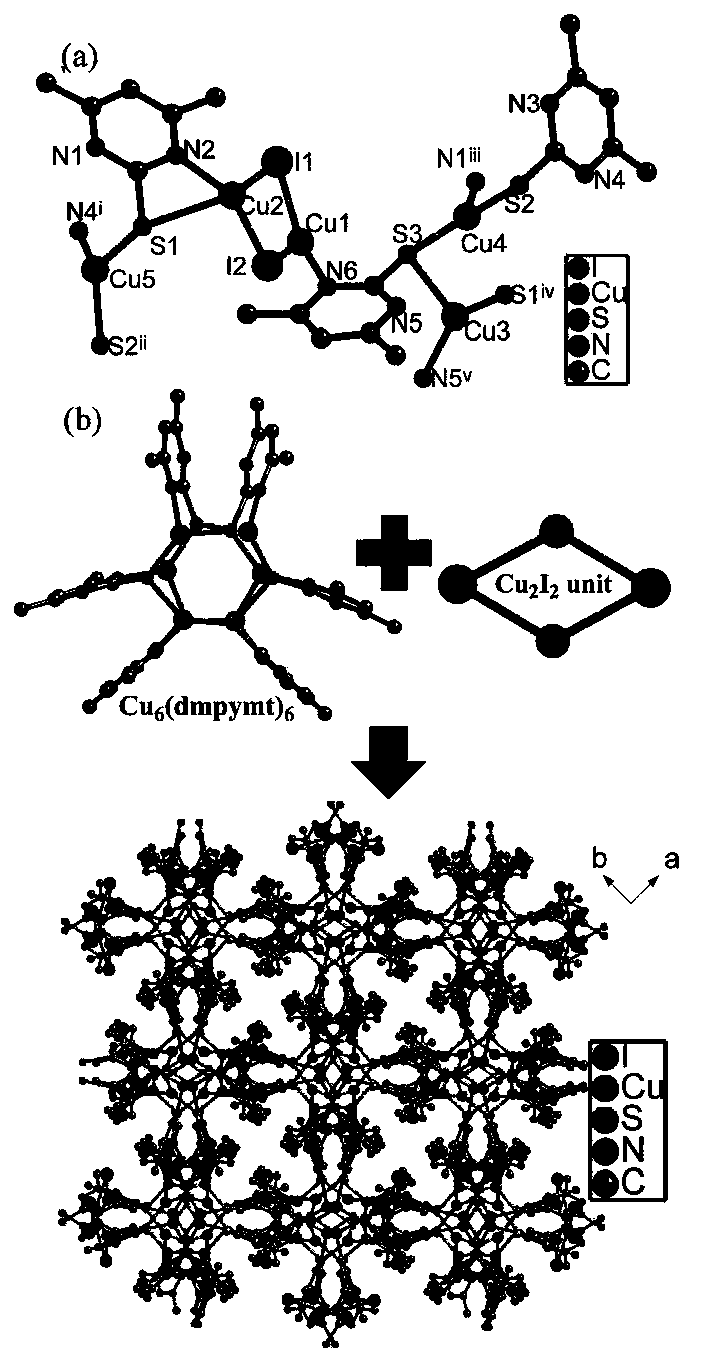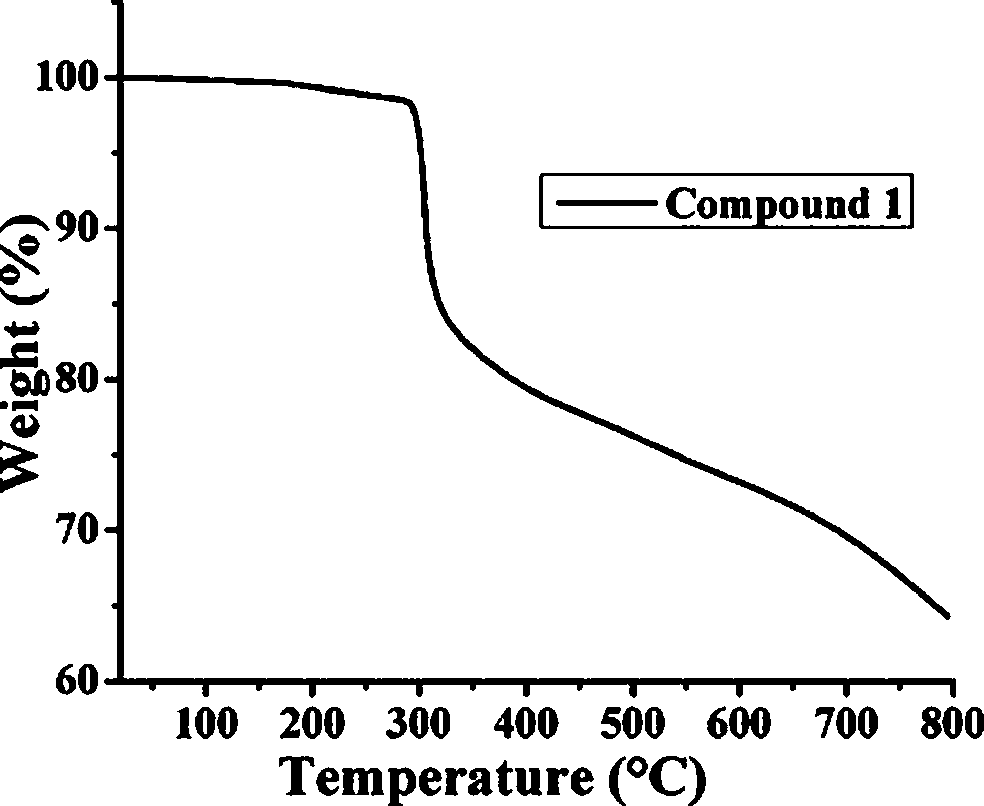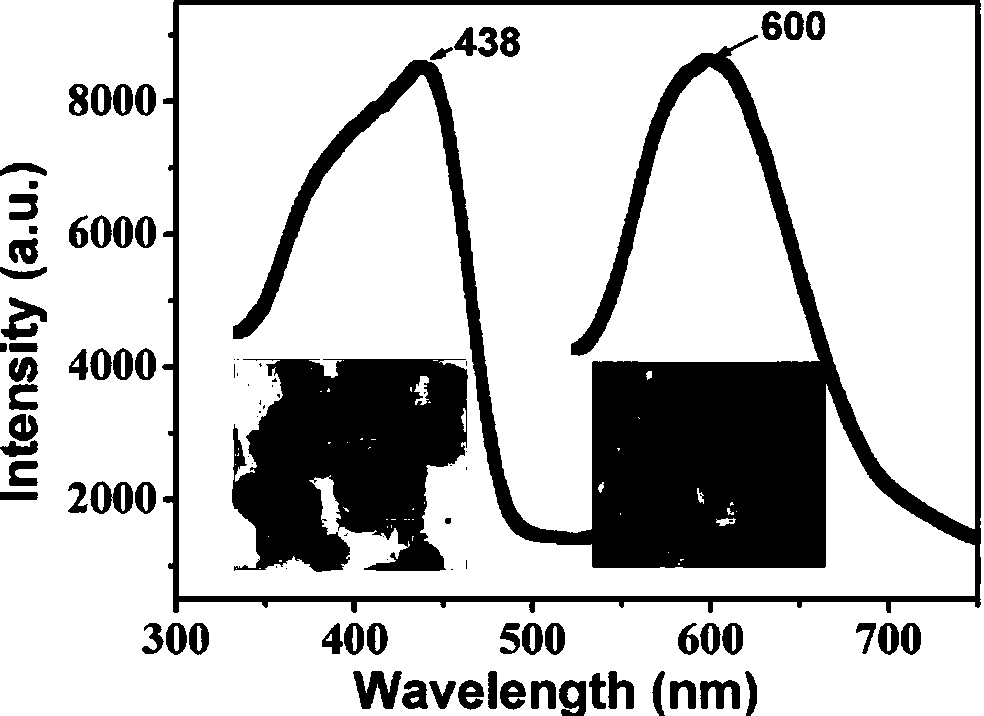A Cu(i)-based fluorescent metal-organic framework and its preparation method and application
An organic framework and metal-based technology, applied in the field of fluorescence sensing, can solve problems such as fluorescence quenching of fluorescent agents, and achieve the effects of good reproducibility, good stability, and simple preparation methods
- Summary
- Abstract
- Description
- Claims
- Application Information
AI Technical Summary
Problems solved by technology
Method used
Image
Examples
Embodiment 1
[0035] Embodiment 1, preparation of Cu(I)-based fluorescent metal-organic framework:
[0036] Accurately weighed CuI (3.8 mg, 0.02 mmol) was dissolved in 4 ml of acetonitrile to form the first solution. Accurately weigh Hdmpymt (2.8 mg, 0.02 mmol) and dissolve it in 4 ml of ethanol solution to form a second solution. The two solutions were blended and stirred magnetically at room temperature for 15 minutes; then the mixture was transferred to a reaction kettle, reacted at 80°C for 3 days, and finally cooled to room temperature at 5°C / hour to obtain yellow granular crystals, which were filtered and After washing and collecting, the target Cu(I)-based metal-organic framework was obtained.
Embodiment 2
[0037] Example 2, Cu(I)-based metal-organic framework crystallographic structure parameters
[0038] The crystal structure of the Cu(I)-based metal-organic framework obtained in Example 1 was determined as follows: a single crystal with a suitable size was selected under a microscope for X-ray single crystal structure analysis. The X-ray diffraction data of crystals were collected by German Bruker Smart-Apex CCD surface detection X-ray single crystal diffractometer, using Mo-Kα target, measured at room temperature. Data reduction and structural elucidation were performed using the SHELXTL-97 program. The main crystallographic data of Cu(I)-based MOFs are listed in Table 1.
[0039] Table 1. Crystallographic structural parameters of Cu(I)-based MOFs
[0040]
Embodiment 3
[0041] Example 3, Experimental operation of Cu(I)-based metal-organic framework sensing nitrobenzene:
[0042] (1) Weigh 2 mg of Cu(I)-based metal-organic frameworks and disperse them in the same volume (4ml) of acetone, acetonitrile, methanol, water, formaldehyde, ethanol, n-butanol, ethylene glycol, N, N- Dimethylformamide, N,N-dimethylacetamide, tetrahydrofuran, chloroform, dichloromethane, benzene and nitrobenzene, and then sonicated for 30 minutes. Finally, the solvent emulsion is subjected to fluorescence spectrometry and color reaction under ultraviolet light (see Figure 5 with 6 ). When the excitation wavelength is 438nm, the solvent emulsions all have fluorescence emission at 590nm.
[0043] (2) every interval of 20nm, by changing the excitation wavelength, the fluorescence quenching emulsion is carried out to measure the fluorescence spectrum, and observe the influence of the excitation wavelength on the fluorescent substance in the quenching emulsion (see Figu...
PUM
| Property | Measurement | Unit |
|---|---|---|
| spectroscopy | aaaaa | aaaaa |
Abstract
Description
Claims
Application Information
 Login to View More
Login to View More - R&D
- Intellectual Property
- Life Sciences
- Materials
- Tech Scout
- Unparalleled Data Quality
- Higher Quality Content
- 60% Fewer Hallucinations
Browse by: Latest US Patents, China's latest patents, Technical Efficacy Thesaurus, Application Domain, Technology Topic, Popular Technical Reports.
© 2025 PatSnap. All rights reserved.Legal|Privacy policy|Modern Slavery Act Transparency Statement|Sitemap|About US| Contact US: help@patsnap.com



